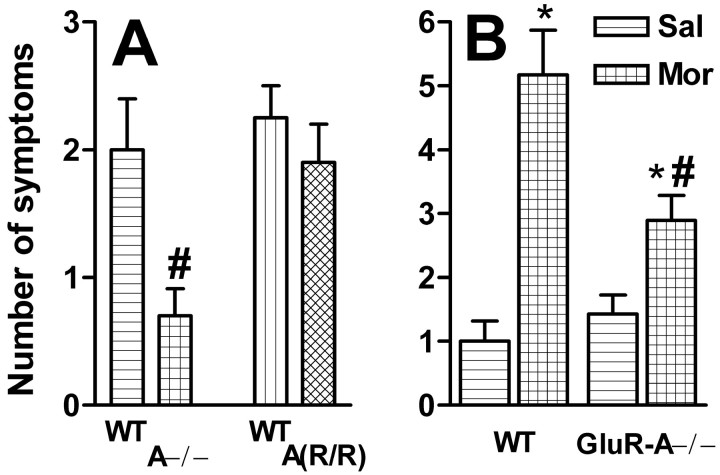Fig. 5.
Naloxone-precipitated withdrawal symptoms after chronic morphine administration. A, GluR-A−/− and GluR-A(R/R) mutant mice and their wild-type controls were treated with escalating morphine doses for 9 d, and withdrawal symptoms were precipitated 24 hr after the last injection by 0.4 mg/kg naloxone. Thebars indicate mean ± SEM withdrawal scores (n = 11–12) summed from the number of appearance of the following symptoms within 15 min of the naloxone injection: forepaw tremor, head twitch, writhe, diarrhea, lying, and forepaw treading. #p < 0.05 for the difference from the corresponding control mouse line; Duncan's test. Naloxone at this dose after saline treatment failed to induce any of these symptoms in any of the mouse lines (data not shown). B, GluR-A−/− mice and their wild-type controls were treated with escalating morphine (Mor) doses for 6 d, and withdrawal symptoms were precipitated 2 hr after the last injection by 1.0 mg/kg naloxone. Saline controls (Sal) were treated similarly. Thebars indicate mean ± SEM withdrawal scores (n = 5–9) summed from the number of appearance of the following symptoms within 25 min of the naloxone injection: jumps, digging, forepaw tremor, head twitch, writhe, and lying. *p < 0.05 for the difference from the corresponding saline value; Dunnett's test. #p < 0.05 for the difference from the corresponding control mouse line; Duncan's test.

